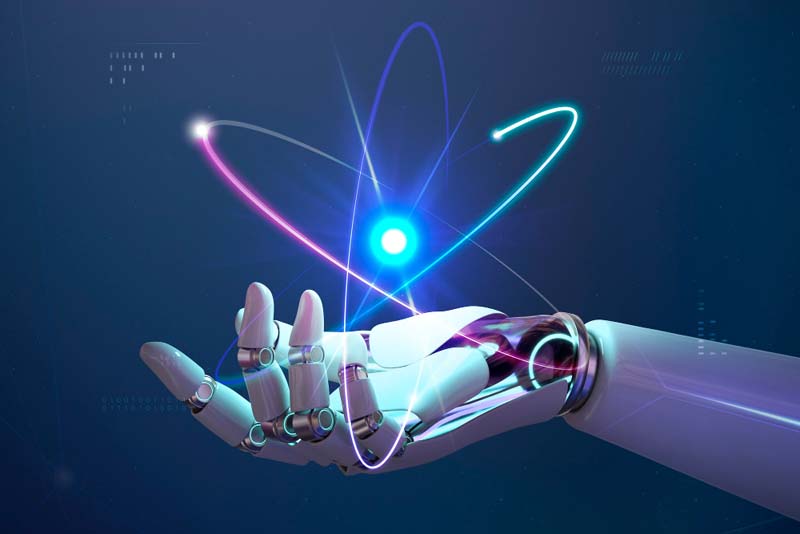Image Credit: freepik.com
Introduction
Artificial Intelligence (AI) has revolutionized how we interact with technology, powering everything from voice assistants to self-driving cars. However, AI processing can occur in different ways—either in the cloud or at the edge of a network. Edge AI and Cloud AI are two major approaches, each with distinct advantages and challenges. But which one holds the key to the future of AI-driven technology? Let’s explore.
What is Cloud AI?
Cloud AI refers to AI processing that takes place on remote servers or data centers rather than on local devices. AI models are stored in the cloud, where they process large datasets and deliver insights to connected devices.
How Cloud AI Works
- Data is collected from user devices (smartphones, IoT gadgets, etc.).
- The data is sent to cloud servers via the internet.
- AI algorithms analyze the data and generate responses.
- The processed results are sent back to the user’s device.
Advantages of Cloud AI
- Scalability: Cloud AI can handle massive amounts of data, making it ideal for big data analytics and complex AI models.
- High Computational Power: AI models can run on powerful cloud servers, leading to faster and more accurate results.
- Seamless Updates: AI models can be updated remotely, ensuring access to the latest algorithms without needing hardware upgrades.
Limitations of Cloud AI
- Latency Issues: Sending data to and from cloud servers introduces delays, making it unsuitable for real-time applications like self-driving cars.
- Privacy Concerns: User data must be transmitted over the internet, raising security and compliance challenges.
- Internet Dependency: Cloud AI requires a stable internet connection, limiting its functionality in remote areas.
What is Edge AI?
Edge AI refers to AI processing that happens directly on local devices instead of relying on remote cloud servers. This means that data is analyzed and processed closer to its source, reducing the need for constant cloud communication.
How Edge AI Works
- AI models are embedded within hardware like smartphones, IoT devices, or autonomous systems.
- Data is processed locally, reducing dependence on external servers.
- Real-time responses are generated, making applications faster and more efficient.
Advantages of Edge AI
- Low Latency: Since data doesn’t need to travel to the cloud, responses are almost instantaneous, making it perfect for time-sensitive applications.
- Enhanced Privacy & Security: Processing data locally means less exposure to cyber threats and breaches.
- Offline Functionality: Edge AI can function without an internet connection, making it reliable in remote locations or low-connectivity areas.
- Reduced Bandwidth Usage: By minimizing the need for cloud communication, Edge AI helps save bandwidth and reduces costs.
Limitations of Edge AI
- Limited Processing Power: Edge devices have lower computational capabilities compared to cloud-based AI servers.
- Hardware Constraints: Running AI on local devices requires specialized chips, which may increase hardware costs.
- Difficult Model Updates: Unlike Cloud AI, updating AI models on edge devices can be complex and may require firmware or software upgrades.
Edge AI vs. Cloud AI: Key Differences
| Feature | Edge AI | Cloud AI |
|---|---|---|
| Processing Location | On-device | Remote cloud servers |
| Latency | Low | High |
| Privacy & Security | High | Lower (data transmission risk) |
| Internet Dependence | No | Yes |
| Computational Power | Limited | High |
| Scalability | Lower | High |
| Update Flexibility | Complex | Easy |
Which One is the Future?
The future of AI isn’t about choosing between Edge AI and Cloud AI, but rather a hybrid approach that combines both.
Why Hybrid AI is the Future
- Real-Time Decision Making: Edge AI will handle instant responses for critical applications, while Cloud AI will manage complex analytics and long-term data storage.
- Optimized AI Performance: A mix of both technologies ensures higher efficiency while balancing speed, security, and scalability.
- Industry-Specific Needs: Cloud AI will continue to dominate data-heavy fields like AI research, while Edge AI will become the standard for applications requiring low latency and privacy, such as autonomous vehicles and healthcare monitoring.
Conclusion
Both Edge AI and Cloud AI have their own strengths and weaknesses. Cloud AI excels in scalability and computational power, while Edge AI is crucial for real-time, secure, and offline operations. Instead of replacing one another, the future will likely see a hybrid AI model, where the two complement each other for smarter, faster, and more efficient AI-driven solutions.
